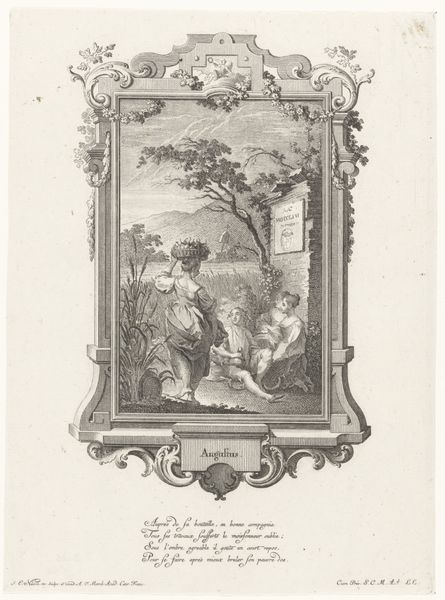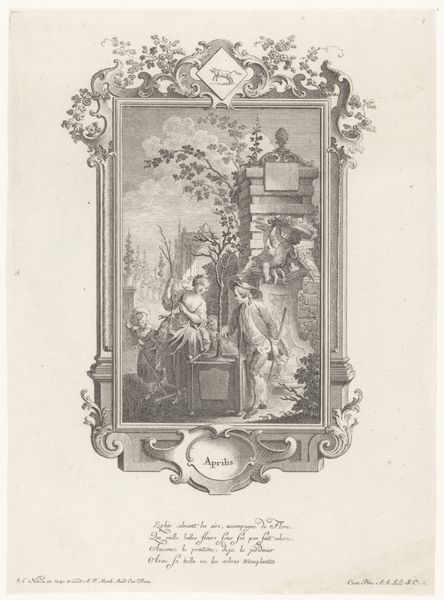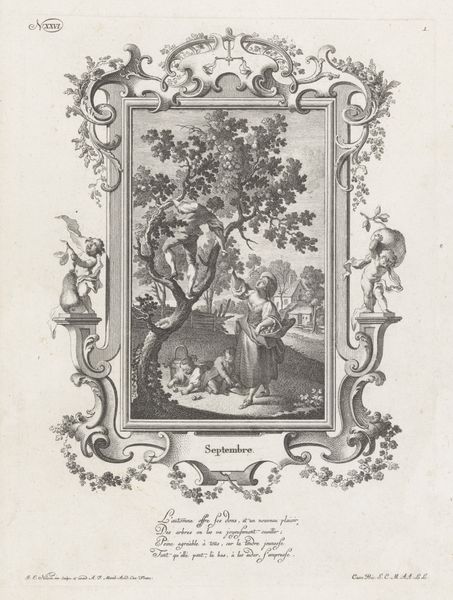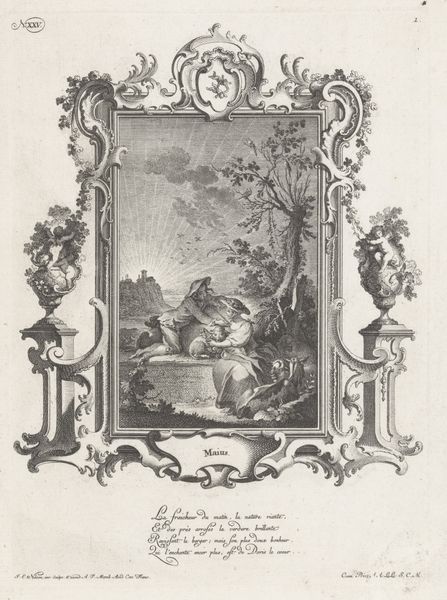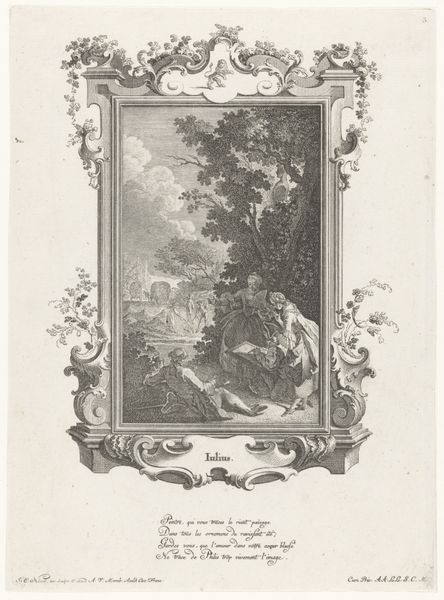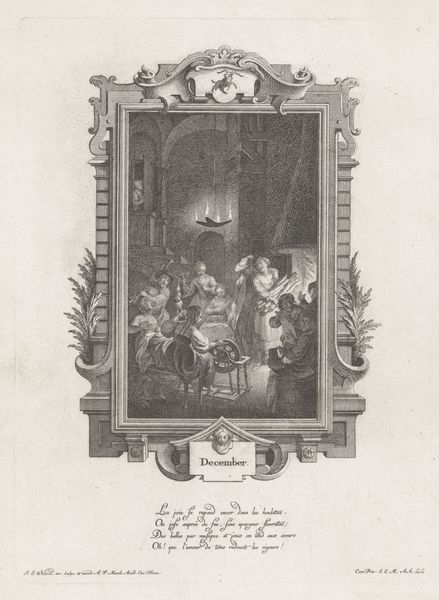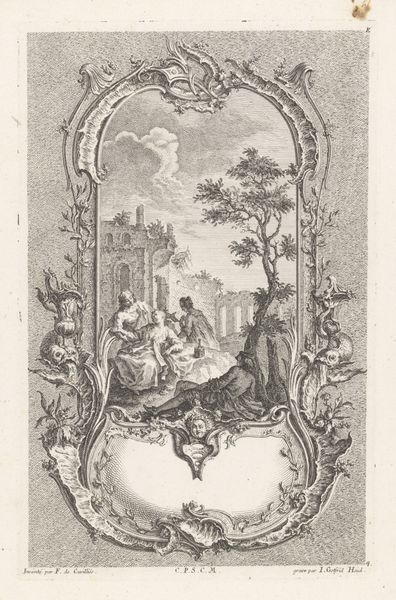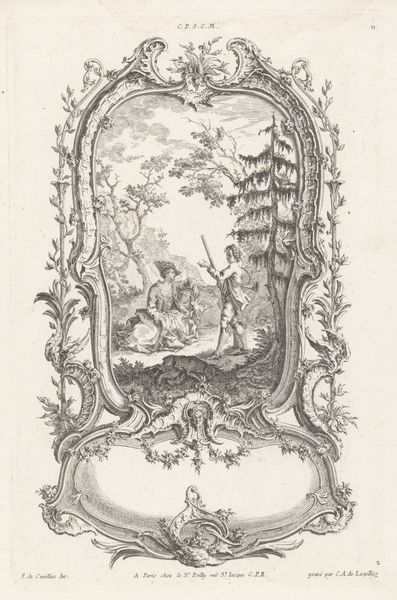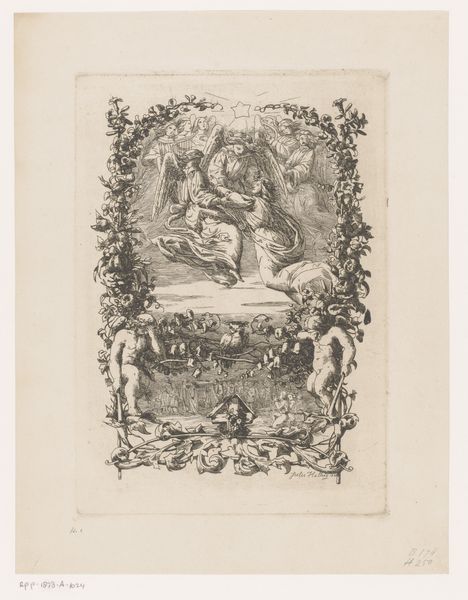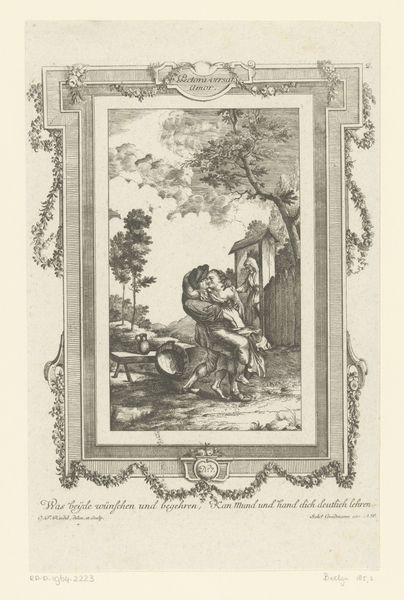
Dimensions: height 265 mm, width 195 mm
Copyright: Rijks Museum: Open Domain
Johann Esaias Nilson created this print, entitled ‘Maart’, using etching and engraving techniques, sometime in the 18th century. Prints like this, which were made in Germany, were important cultural artifacts. This is because in the 1700s, prints were a popular way to spread ideas and stories to a wide audience, especially among people who couldn't afford original paintings. They were relatively inexpensive, and they could be reproduced in large numbers. This image is part of a series depicting the months of the year. But rather than focusing on agriculture, or the aristocracy, it depicts a scene of village life. With close looking, we can see elements of class at play, with the seated gentleman receiving a portion of the tax collected. Understanding prints like these requires us to delve into the social and economic conditions of 18th-century Germany. Examining historical records, such as guild regulations, trade statistics, and even personal letters, can reveal a wealth of information about the lives and values of the people who created and consumed these images.
Comments
No comments
Be the first to comment and join the conversation on the ultimate creative platform.
